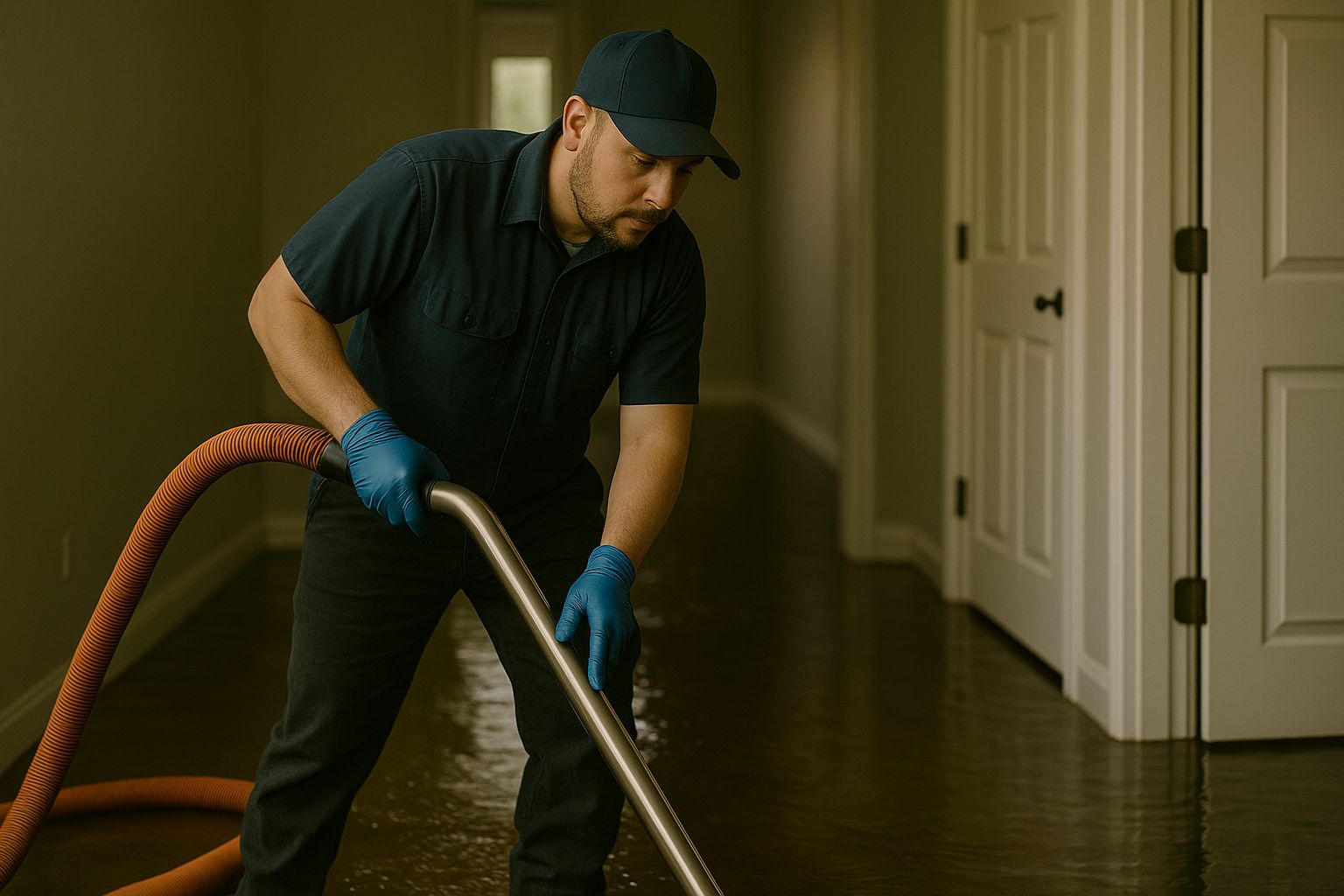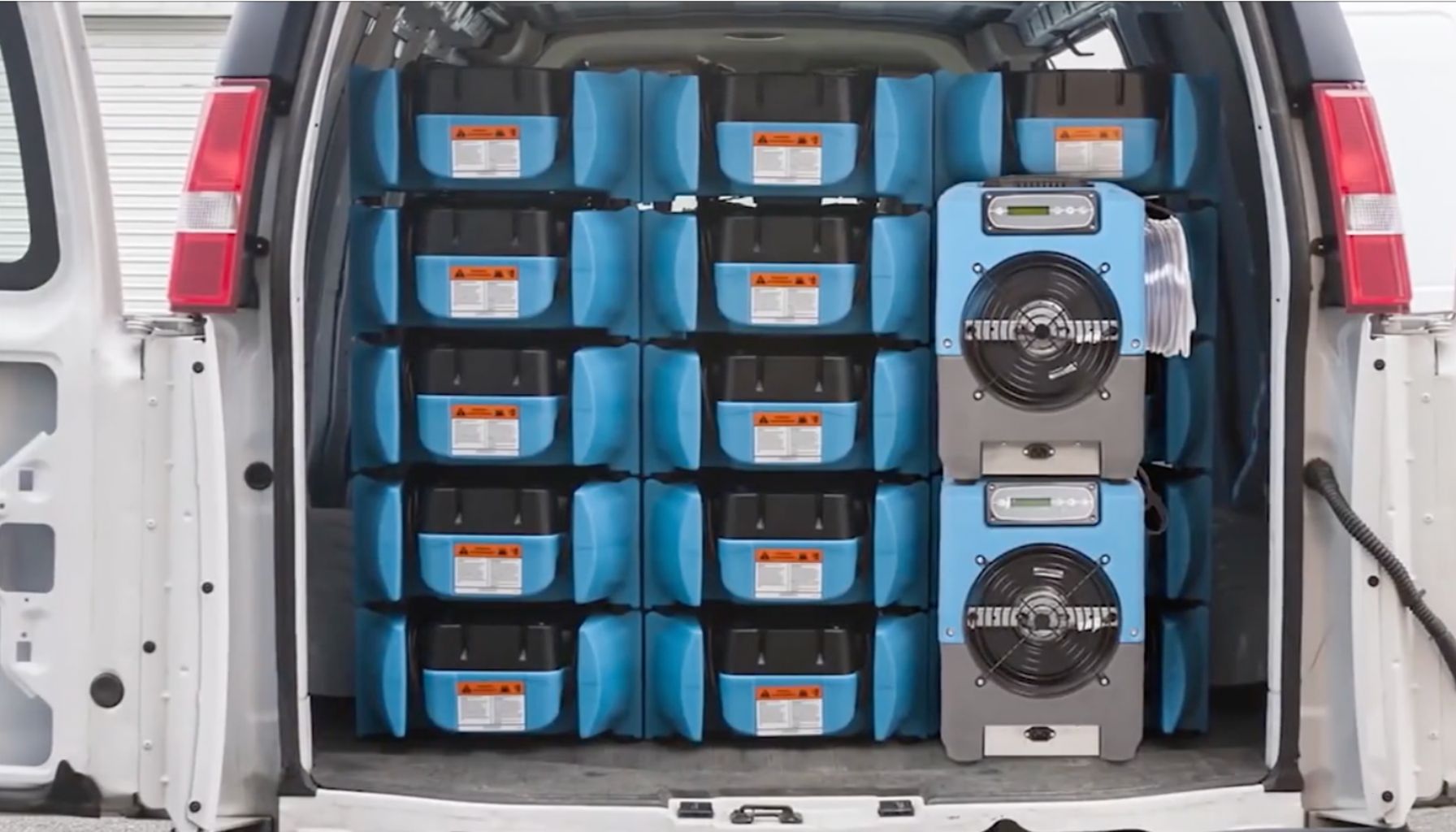How to Choose the Right Water Damage Mitigation Company
Posted May 21, 2025

When water makes its way into places it doesn’t belong, the damage can escalate quickly and often before you even notice the problem. From sudden pipe failures to weather-related flooding, the consequences can disrupt homes, businesses, and lives. That’s where water damage mitigation comes in. It’s the first and most critical step in stopping damage from spreading and preserving the integrity of your home or building.
But not all companies are created equal. Choosing the right water damage mitigation company can make the difference between a smooth recovery and long-term complications. This guide explains what water damage mitigation entails, what equipment is used, and most importantly, how to choose a reliable company that will do the job right.
What Is Water Damage Mitigation?
Water damage mitigation refers to the immediate actions taken to reduce or prevent further damage after a water intrusion event. It focuses on removing standing water, drying out the affected areas, and protecting undamaged property from additional harm.
It’s important to distinguish mitigation from restoration. While mitigation is the emergency response, restoration involves the rebuilding and repair of what was damaged. Both are crucial, but mitigation is where the process begins.
In Canada, common causes of water damage include:
- Heavy rainfall or flash flooding
- Overflowing appliances such as dishwashers or washing machines
- Leaking roofs or windows
- Sewer backups
- Frozen or burst pipes in winter
Timely mitigation is critical. Water left standing for even a few hours can seep into floors, drywall, and structural components, increasing the risk of mould, rot, and structural compromise. That’s why it’s essential to act fast and bring in professionals who know how to contain the situation effectively.
What Equipment Is Used for Water Mitigation?
Professional companies rely on specialized tools and equipment to mitigate water damage thoroughly and efficiently. Here’s a breakdown of what they use:
- Water Extraction Units
These are high-powered machines designed to remove large volumes of water quickly. There are two main types:
- Truck-mounted extractors, used for large-scale water removal
- Portable extractors, ideal for hard-to-reach areas or upper floors
- Air Movers
Industrial air movers help circulate air rapidly, promoting evaporation. These are strategically placed to ensure consistent airflow across wet surfaces. - Dehumidifiers
These pull moisture from the air, reducing humidity and accelerating the drying process. Two common types are:
- Refrigerant dehumidifiers, suitable for most drying scenarios
- Desiccant dehumidifiers, used in colder or larger spaces
- Moisture Meters and Thermal Imaging Cameras
To ensure moisture is fully eliminated, professionals use tools to detect water behind walls, under floors, or in ceilings. Thermal imaging helps identify hidden pockets of moisture that could cause issues later if left untreated. - HEPA Air Scrubbers
In situations where water damage is contaminated (such as sewer backups), air scrubbers help filter and purify the air, removing bacteria, mould spores, and odours.
Using professional-grade equipment makes a significant difference in the effectiveness and speed of water damage mitigation. Consumer-grade fans or dehumidifiers are rarely sufficient for anything beyond minor spills.
Why Choosing the Right Company Matters
The urgency of water damage often puts property owners in a vulnerable position. In that stress, it can be tempting to hire the first company available. But not all providers are equal in skill, experience, or professionalism.
Hiring the wrong company can result in:
- Incomplete drying, leading to hidden mould growth
- Delays that drive up the cost of repairs
- Health hazards from improper handling of contaminated water
- Poor documentation that hinders insurance claims
On the other hand, a reputable company will:
- Respond quickly with the right tools and expertise
- Follow industry best practices
- Provide clear, honest communication
- Help coordinate with your insurance provider
In Canada, where weather patterns and building codes vary by region, it’s especially important to work with a local company that understands your area’s unique challenges.
Working with Insurance Providers
Proper documentation is key to ensuring a smooth insurance claim. A professional company will take detailed photos, record moisture levels, and provide clear reports to help you validate your loss. Many companies will also coordinate directly with your insurer, helping to reduce stress and speed up the claims process.
What Happens After Mitigation?
Once mitigation is complete, the next step is restoration—repairing or rebuilding what was damaged. This may involve replacing flooring, drywall, insulation, or other structural elements. Choosing a company that also offers restoration services can streamline your recovery process and reduce the need to coordinate between multiple providers.
Key Factors to Consider When Choosing a Water Damage Mitigation Company
- Certifications and Training
Look for companies certified by the Institute of Inspection Cleaning and Restoration Certification (IICRC). This ensures they follow industry standards and are trained in the latest techniques. Ask if their technicians receive ongoing education. - Emergency Response Time
Water damage doesn’t wait. Your company should offer 24/7 emergency response with fast turnaround. Ideally, they should be on-site within hours, not days. - Experience with Your Property Type
Residential and commercial buildings have different mitigation requirements. Multi-unit residential properties (like condos or apartments) require additional care to protect neighbouring units and shared infrastructure. - Licensing and Insurance
Ensure the company is licensed to operate in your province and carries appropriate liability and workers’ compensation insurance. This protects both you and your property. - Equipment and Technology
Ask what type of equipment they use and whether they use moisture detection tools. Advanced tools lead to more effective mitigation. - Communication and Documentation
Professional companies provide clear, written scopes of work. They document damage with photos and reports, which are helpful when filing insurance claims.
Questions to Ask Before Hiring
Before you sign any contracts, ask these important questions:
- Are your technicians IICRC certified?
- How quickly can you respond in an emergency?
- What equipment do you use for drying and moisture detection?
- Do you offer support for filing insurance claims?
- Can you provide examples of past work similar to mine?
- Is all work documented and reported in writing?
Asking these questions can help you identify the level of professionalism and preparedness of a company.
Red Flags to Watch Out For
Unfortunately, there are companies that overpromise and underdeliver. Be cautious of:
- Lack of certification or credentials
- Vague or evasive answers to your questions
- Pressure to sign quickly without details
- No written estimate or contract
- Unmarked vehicles or no physical address
If anything feels off, trust your instincts. It’s better to delay by an hour and hire the right team than rush and regret it.
Why Work With an EMRG Member?
EMRG is a national network of certified property restoration professionals across Canada. Every company in our network has been vetted for their:
- Industry certifications
- Experience handling various types of water damage
- Technical expertise across residential, commercial, and multi-unit properties
- Strong reputation and client feedback
- Commitment to high standards of care
- Extensive experience with insurance-based restoration projects
When you work with an EMRG member, you gain peace of mind knowing you’re working with a trusted service provider who has met strict requirements and operates with integrity. Contact EMRG at 1-844-344-3674 for 24/7 mitigation and restoration services.
Conclusion
Water damage mitigation is not something to take lightly. The choices you make in the first 24 hours can have long-lasting impacts on your home, your health, and your finances. Acting fast is critical, but so is acting wisely.
By understanding what mitigation involves, what tools are required, and what makes a company trustworthy, you’re better equipped to protect your property and avoid costly mistakes.
EMRG Canada is here to help connect you with certified, experienced companies in your area who are ready to respond when you need them most.
Need help fast? Call us 24/7 at 1-844-344-3674.
Frequently Asked Questions: Water Damage Mitigation
Q: How quickly should I call a water mitigation company after a flood?
A: Immediately. The faster professionals can respond, the better your chances of minimizing structural damage and mould growth.
Q: Will insurance cover the cost of water damage mitigation?
A: It depends on your policy. Most home insurance policies cover sudden and accidental water damage, but it’s important to review your coverage or speak with your insurer.

